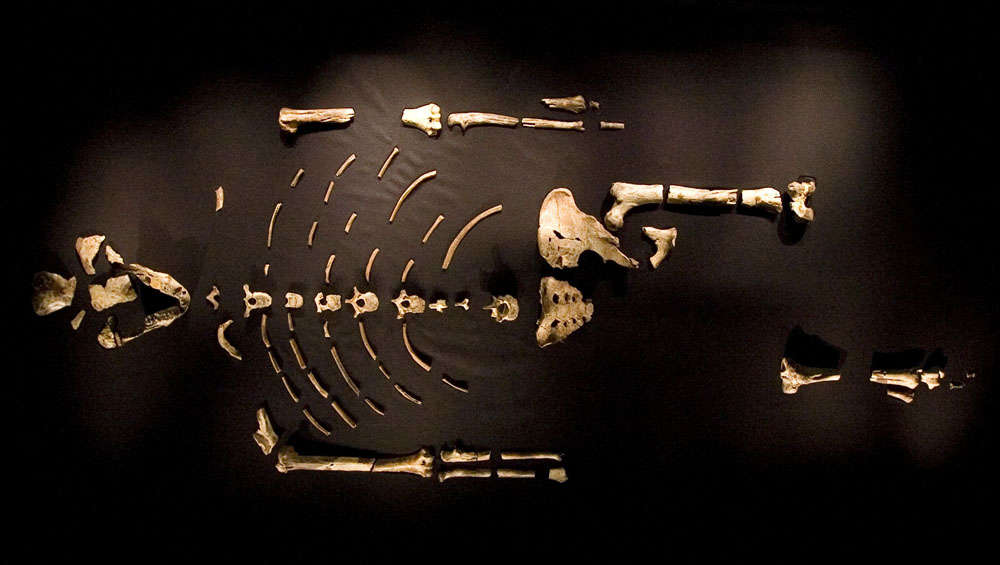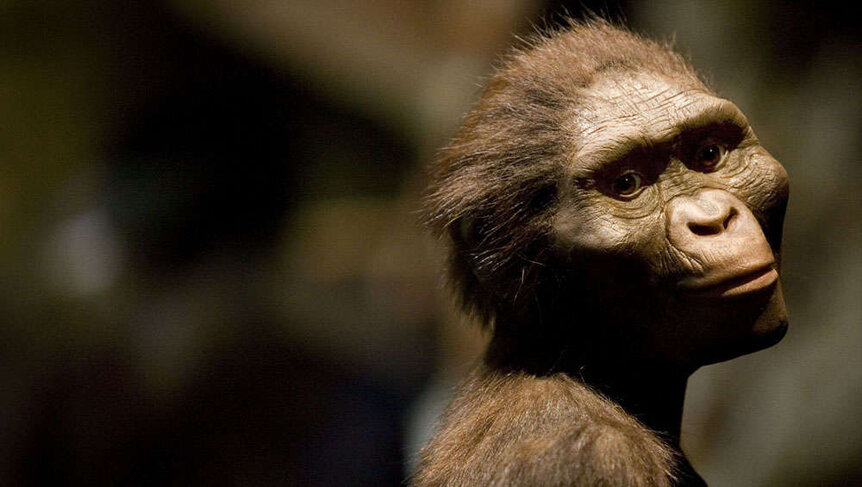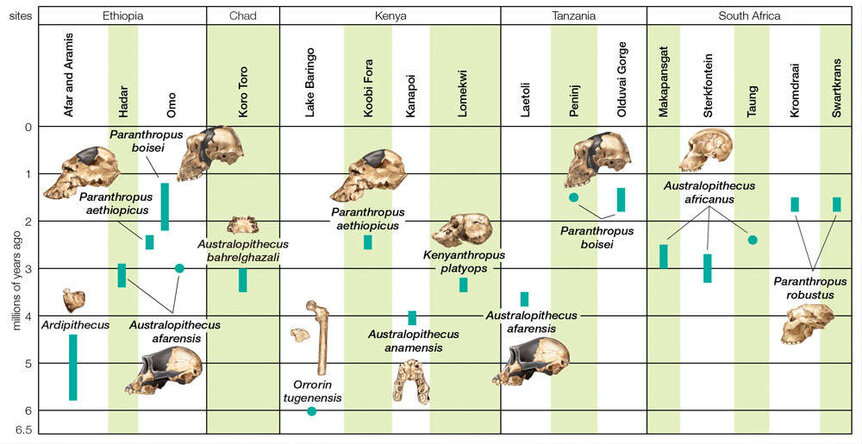Create a free profile to get unlimited access to exclusive videos, sweepstakes, and more!
Did this skeleton just tell us when homo sapiens first stood up?

Most of us don’t see something that looks more chimp than human when we look in the mirror, but an anthropological reflection probably would.
Ardipithecus ramidus or “Ardi” supposedly had a hairy face and other features Homo sapiens evolved out of. What makes this human ancestor stand out is that it may be telling us when our species started to walk upright. Something about its exceptionally preserved hand is revealing more about how it moved around. Ardi may even connect humans with a common ancestor that we share with—wait for it—chimps. The 4.4 million-year-old skeletal remains are relics from a time when our hominid predecessors were not quite human yet, but not quite ape, either.
“Ardi's skeleton uniquely combines ape-like climbing features with human-like upright walking features, which no other living animal possesses,” anthropologist Thomas Cody Prang, who recently led a study published in Science Advances, told SYFY WIRE. “The bottom of the skull, hip bone, and foot of Ardi have some of the key human-like features associated with upright walking. At the same time, Ardi retains primitive features that are absent from most other hominids.”
What has now drawn so much attention to Ardi are the possibilities that have come up after a new study of the skeleton (click to see it and how it differs from "Lucy", above), especially the hand, of this creature. Hands and feet can give away how a hominid got around depending on how they evolved to carry body weight. There are particular features of hand and foot bones that can tell us what they were used for. The hands of prehistoric homo species such as Neanderthals and Homo naledi were made for creating and using tools made of stone and possibly wood. Evidence of cut marks from these tools on the bones of animals that these people hunted support that.
Ardi is especially unique in having proto-human hands that could have hung onto branches or supported its body on all fours, but may have also been able to develop (extremely primitive) tools. Next to its hands, there were other signs it could have been standing up at least some of the time. Bipedal species have the head positioned on top of the spine. Ardi’s skull was found to have that anatomical adjustment, and at least one of its hip bones had an attachment similar to the one that pulls your thigh up when you take a step. This hominid’s toe bones were also closer to human toes that are designed to push off the ground as we walk upright.
Even after having found all this evidence, which links Ardi to some of the earliest bipedal hominids such as the famous 3.2-million-year-old Australopithecus skeleton known as Lucy (top and above), Prang remains cautiously optimistic about what it could mean.
“Ardi's hand doesn't indicate that it did or did not walk upright,” he said. “This set of hand features in Ardi implies that they were retained from the last common ancestor of humans and chimpanzees. Ardi's hand, and the rest of the skeleton, help provide the evolutionary context for the earliest upright walking human ancestors.”
Whatever the last common ancestor of humans and chimpanzees was, it would have been a climber. Ardi’s long, curved fingers were used to climb tree trunks and hang from branches. This species also had a big toe that stood out from the rest and meant for grasping, another thing that could reflect climbing to have been part of its lifestyle. Hands and feet are believed to have evolved simultaneously. The reason why is still undetermined. However, Prang does believe that bipedalism had to have evolved from a hominid suited to climbing vertically and supporting its weight below branches, something evident in Ardi’s skeleton.
There are more ways in which Ardi shows signs of how humans would evolve, whether or not it actually walked on two feet itself. Its canine teeth may be unrelated to the other bones that may or may not have helped it walk bipedally, but they appear to be another link to the last ancestor shared by chimps and humans. Its canines were not as long as those of modern chimps but not nearly as short as those of modern humans. What we do know is that the earliest humans to stand up on two feet had shorter canines than their predecessors.
“Ardi helps us infer what the common ancestor of humans and chimpanzees might have looked like because it is close in time to that common ancestor,” Prang said. “The human-like traits present in Ardi are likely to be more recently evolved from the common ancestor, whereas other traits associated with tree climbing are more likely to be retained from the common ancestor.”
So go for a walk. After finding this out, you are probably going to think really hard about every step you take.




























